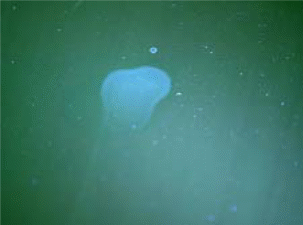Abstract
Light has properties that make it a great asset in various technologies. An understanding of these properties is therefore beneficial in forensics and other professions. Among the various properties of light that make it useful in forensics is the fact that it can behave both as a particle and as a wave. Light sources that produce multiple wavelengths can be used in crime scenes to identify materials that glow when exposed to ultraviolet light. In addition to its use in the identification of crime scenes and collection of evidence samples, light can also be used in analyzing collected samples. This enables investigators to know the concentration of various components of samples like urine, blood and so forth. Light technologies can also be used to determine the identity of unidentified components of evidence samples.
Introduction
Light behaves like a wave in the way it travels. However, light also acts like a particle in the way it transfers energy to electrons. This property is referred to as the Dual-Theory of light. A good understanding of the properties of light, its characteristics as a form of energy, its applications in technology and its uses enables investigators to apply it in forensics. Light can be used to locate or collect evidence from a crime scene, it can be used to observe the evidence and it can be used to analyze evidence to establish various aspects of a certain crime. This paper is an in-depth analysis of applications of light in forensics.
Forensic uses of light
Various substances have a property referred to as phosphorescence. Such substances are called phosphors and they glow if they are exposed to ultraviolet light. It is important at this point to note that human bodies as well as other forms of forensic evidence contain various types of phosphors (Texas Education Agency, 2011). Thus, ultraviolet light is an invaluable part of evidence collection in forensics. For instance, investigators use filters and special goggles to observe semen stains in rape cases because semen has a photoluminescence effect when exposed to ultraviolet light (Lee & Khoo, 2010). The picture below shows semen after it is exposed to ultraviolet light.

Light is the primary component of magnification technology. Such technology includes macro view, which is used to magnify objects and samples; micro view that is part of the compound microscope; chromaticity diagram; and microscopic refractive index. These magnification functions are important in forensics because they are used in analyzing samples from crime scenes. In addition to magnification, light is also used in spectroscopy, which is an essential part of forensics. Spectroscopy is used to split incoming wavelengths and thus it is helpful in the identification of unknown components of evidence samples (Texas Education Agency, 2011). A refractometer, an instrument used to compare the refractive indices of liquids and solids also uses light, and it is helpful in forensics. It can be used to check concentrations of evidence samples like drugs in blood, sugar in blood, as well as in determining the identity of unknown components of evidence samples.
Conclusion
From the discussion above, it is evident that light is an irreplaceable component of the technologies used in forensic science. During evidence collection, investigators use a light source that shines multiple-wavelength light on the crime scene in order to locate credible evidence. After the investigators have finished collecting the evidence, various light technologies are used in analyzing samples and identifying unknown components of the evidence samples. One of the frequently used properties is that of phosphorescence that enables illumination of the crime scene during evidence collection and illumination of components of collected samples during analysis of evidence.
Reference List
Forensic Light Source Applications: Wavelengths and Uses. (n.d.).Web.
Lee, W., & Khoo, B. (2010). Forensic Light Sources for Detection of Biological Evidences in Crime Scene Investigation: A Review. Malaysian Journal of Forensic Sciences. 1(1), 17-27. Web.
Texas Education Agency. (2011). Forensic Use of Light. Law, Public Safety, Corrections & Security.